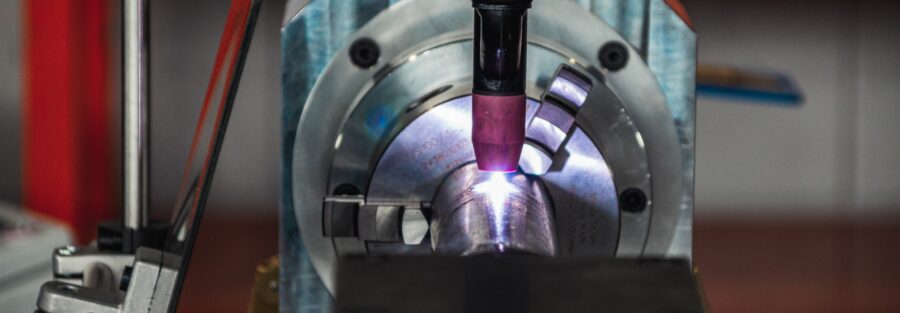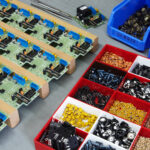Technology increases yearly and improves efficiency and decreases labor costs for companies big and small. Robotic welding is incredibly beneficial.
What is robotic welding?
In robotic welding, a robotic arm is programmed to perform the welding process. The arm is equipped with a welding torch and is mounted on a base that allows it to move in various directions with accuracy.
To begin the welding process, the robotic arm is programmed with the specific welding parameters and the required welding path. It is then positioned over the workpiece, and the welding process is initiated. The arm can be programmed to weld a variety of materials and in different welding processes, such as MIG (metal inert gas) welding, TIG (tungsten inert gas) welding, and stick welding.
After the welding process is completed, welds are inspected to ensure they meet quality standards. More processes, such as grinding or polishing, may need to be completed in order to remove excess material and improve product appearance.
Robotic welding systems may also include additional equipment, such as vision systems and sensors, to help the robot accurately position itself and maintain the required welding parameters.
Overall, the use of robotic welding allows manufacturers and fabricators to automate the welding process, improving efficiency, productivity, and quality. These benefits are described in more detail below:
Increased productivity & quality: The aspect that draws most businesses to consider robotic welding is more consistent, higher-quality welds. Once the quality of materials and consistency of workflow are systemized, a robotic device can perform high quality welds.
Increased efficiency, flexibility: Robotic welding can work at a faster pace and with greater accuracy than human welders. Robotic welders can be programmed to perform a variety of welding tasks, making them more flexible than human welders. In addition, robotic welders can consistently perform the same task over and over, making them ideal for high-volume production. Breaks in work time are minimized allowing for more products to be produced.
Reduced labor costs: Using robotic welders can reduce the need for human labor, leading to lower labor costs. In addition, robotic welders can work in hazardous environments or perform tasks that may be dangerous for humans, improving safety in the workplace. A safer workplace translates to less money being spent in the event of a hazard.
Reduced waste: Overwelding is a huge problem for any size welding enterprise that can cost sometimes tens of thousands of dollars. Robotic welding can ensure ultra-precise specifications. With less material wasted, cleanup becomes easier and minimizes downtime between projects.
Increased job opportunities: Though it may seem like robotic welding will decrease the workforce in the welding industry, there is actually the opportunity to increase it. New job opportunities can become available for individuals trained in programming, maintenance, and repairing robotic systems. In addition, humans are needed for quality control processes to ensure that products are made to standard.
Primo Corporations offers a number of comprehensive engineering services and large scale manufacturing of products including robot welding. To learn how we can apply our expertise to your next project, contact us today.





